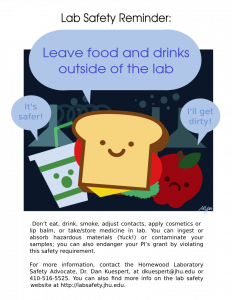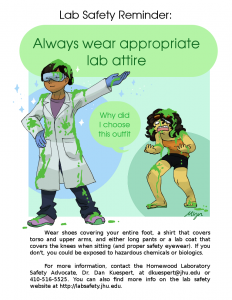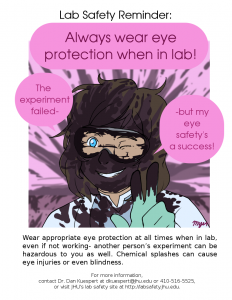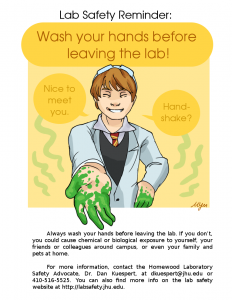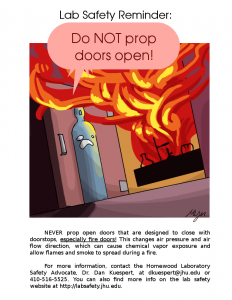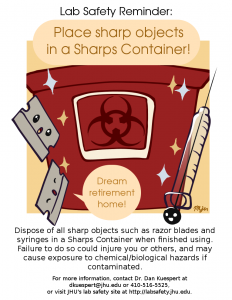Most of our labs have eyewashes or drench hoses (pull-out eye/face/body washes) for emergency use. These must be tested periodically. Drench hoses (which are part of the sink) or eyewashes with plumbed drains (most do not) are the responsibility of the laboratory. Here’s how to test a drench hose or eyewash:
Run the spray for 3 minutes or until the water runs clear, whichever is longer. If the water does not run clear immediately, the sprayer does not immediately actuate, pressure is too high or low, or if the water is not a tepid temperature, contact Facilities Management at x6-8063 as soon as possible to have the sprayer repaired. After testing the eyewash, clean the sprayer and any covers with alcohol wipes.
Log the test date, result, and any corrective actions taken. Logbook sheets must be retained until 2 years have passed from the last test recorded on them. A PDF form to use for logbooks is contained in the university policy on emergency equipment at https://hpo.johnshopkins.edu/hse/policies/156/10941/policy_10941.pdf?_=0.719595961086. Keep the logbook near the drench hose/eyewash station or place a small sign nearby stating the location of the log.
It is fine to use a single logbook for multiple drench hoses in a large lab, but use separate pages for each drench hose and label the hoses so you can tell which is which.
